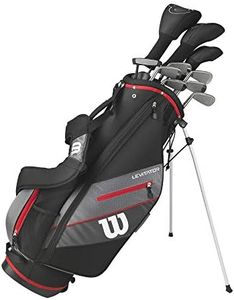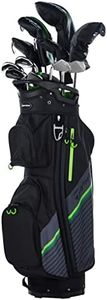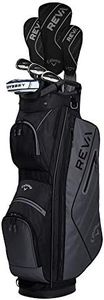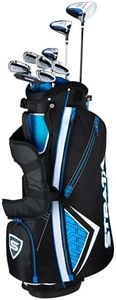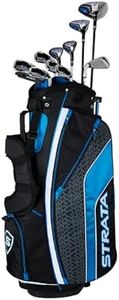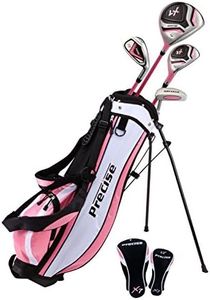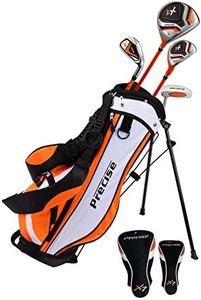We Use CookiesWe use cookies to enhance the security, performance,
functionality and for analytical and promotional activities. By continuing to browse this site you
are agreeing to our privacy policy
9 Best Left Handed Golf Club Sets
From leading brands and best sellers available on the web.Buying Guide for the Best Left Handed Golf Club Sets
Choosing a left-handed golf club set can transform your golfing experience, making the game more comfortable and enjoyable. The key is to understand the different parts and features of a golf club set, so you can match them to your ability, style, and typical playing conditions. Start by thinking about your skill level, how often you play, and what parts of your game you want to improve. When you understand the function and benefit of each key element, picking the right set becomes much simpler.Club CompositionClub composition refers to the specific clubs included in the set—typically a mix of drivers, woods, irons, wedges, and a putter. This matters because a well-balanced set supports different types of shots throughout the game. For beginners, sets with more forgiving clubs (like hybrids and cavity-back irons) offer easier play. Intermediate or advanced players might want a wider selection for more shot control and versatility. Think about what shots you struggle with or enjoy—select a set that best covers those areas.
Shaft MaterialShaft material is most often either steel or graphite, and affects both the weight and flexibility of your clubs. Steel shafts are heavier and provide more accuracy, which is favored by stronger or more experienced players. Graphite shafts are lighter, making swinging easier and shots longer, which is great for beginners, seniors, or anyone with a slower swing speed. Consider your own strength and swing speed when choosing—if you struggle to generate power, graphite might be best; if you value precision, opt for steel.
Club FlexClub flex means how much the shaft bends during a swing. Options range from extra stiff to ladies' flex. A softer flex helps if you have a slower swing speed, giving you better distance and control, while a stiffer shaft is better for those with fast swings, preventing wayward shots. Consider your typical shot distance—if you swing fast and long, go stiffer; if you swing slower, a regular or soft flex is more forgiving.
Grip SizeGrip size determines how comfortable and controlled your hold will be during the swing. Standard, midsize, and oversize grips are available. If your hands are small, standard grips work well; if larger, midsize or oversize give you better control. Test how your fingers meet your palm when gripping—if they dig in, try a bigger size; if there’s a gap, standard may suffice. Proper grip size reduces hand fatigue and improves your consistency.
Club LengthClub length refers to how long each club is, which needs to match your height and arm reach for good posture and accuracy. Too long and you’ll struggle to control the swing; too short and you may need to stoop, losing power. Most sets offer standard lengths, but some allow custom ordering. Check manufacturer guides based on your height or get measured at a golf store; the right length helps you play comfortably and consistently.
Weight and BalanceWeight and balance pertain to how heavy the clubs feel and how that weight is distributed along the shaft. Lighter clubs are easier to swing and help beginners make contact, while heavier or head-heavy clubs can provide stability and control for more confident players. Try swinging different clubs—if your arms tire quickly, choose lighter sets; if you value shot feedback and control, medium or heavier weights may suit you.
